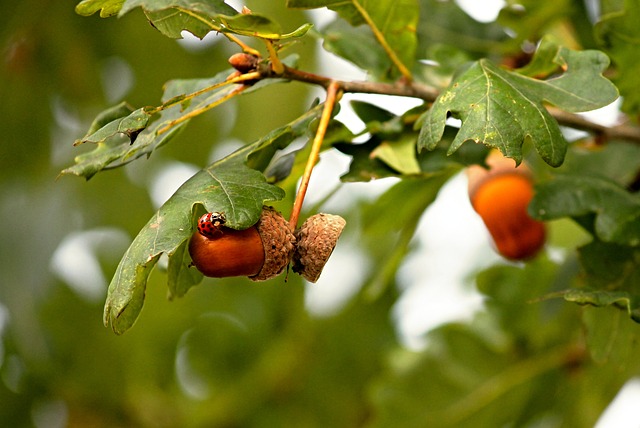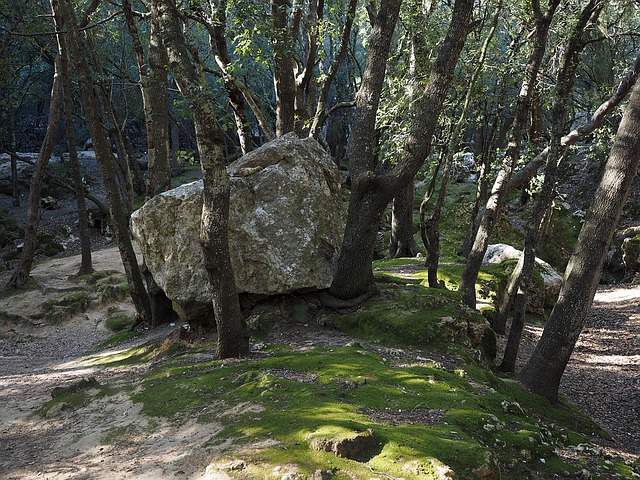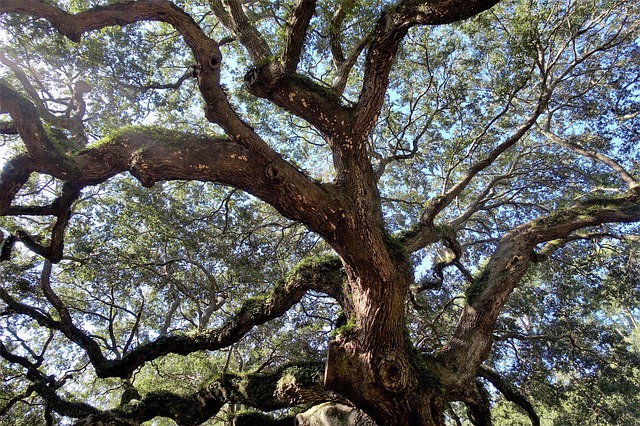California Oak Trees
If you are interested in learning about California Oak Trees, continue reading. This article is an excerpt from the book called “TREES OF THE CALIFORNIA SIERRA NEVADA“
A new and simple way to identify and enjoy some of the world’s most beautiful and impressive forest trees in a mountain setting of incomparable majesty
LEAVES FEATHER-LOBED AND BRISTLE-TIPPED: OAKS I
Regardless of foliage, oaks (plates 20-23) can be identified by end buds clustered at the twig tips (but see also Cascara Buckthorn, plate 22, and Golden Chinkapin, Plate 29). Oaks also have more than three bundle scars per leaf scar and, of course, bear acorn fruits. In late spring, male blossoms occur in slender, drooping catkins several inches long. Female flowers are small and unobtrusive. Acorns, green at first, become brown when mature. They are held in basal cups that, nevertheless, are commonly described as either bowl-shaped or saucerlike.
An oak species is most often classified as a member of either the red or white oak group. The lobe and leaf tips of red oaks have protruding hairlike bristles that are lacking in white oaks. Also, the acorns of red oaks take two years to mature while those of white oaks require only one. Thus, mature red oaks usually have developing acorns on the twigs older ones on the branchlets. White oak acorns, on the other hand, grow only on the twigs. In addition, the inner surface of the shells (not cups) of red oak acorns is hairy while those of white oaks are not. The meat of red oak acorns, too, usually contains much tannic acid and is bitter, while that of white oaks is light-colored and more edible. Canyon Live Oak (plate 25), an exception to some of these guidelines, is called an intermediate oak.
Oaks are often valuable timber trees, their acorns are essential in the diets of deer, squirrels, and many other wildlife species. Acorns also once served as important foods for Native Americans. Even the bitter acorns of red oaks were rendered edible by pounding the kernels and treating the flour with hot water. Reportedly, early settlers used dried acorn shells as a coffee substitute.
On this plate is the only deciduous member of the red oak group in the Sierra. Interior Live Oak also a red oak is evergreen.
CALIFORNIA BLACK OAK Quercus kelloggii Newb.
The only wild oak in the Sierra with deeply lobed and bristle-tipped foliage. Leaves 4”-7” long, with stalks 1”-2” long. Twigs occasionally hairy; buds about 1/4” in length, pointed, and hairless. Acorns 1”-1 1/2″ long with bowl-like cups. Trunk dark. Height to 75’ (95’); diameter to 3’ (4’). Mixed forests to 7000’ elevation. Red oak species from the eastern United States, often planted for landscaping, have smaller acorns and either less-deeply lobed leaves or shorter leafstalks.

LEAVES MOSTLY FEATHER-LOBED WITHOUT BRISTLE-TIPS: OAKS II
These three deciduous oaks are the only white oaks in the Sierra. Trunk bark light gray. In species; Encino (en-SEEN-oh) is used for an evergreen oak.
OREGON OAK Quercus garryana Dougl. ex Hook
A species with deeply-lobed leaves 2”-4” long, somewhat leathery, glossy above, usually hairy beneath. Leafstalks 1/2 “-1” in length. Twigs frequently hairy; buds 1/4 “-1/2” long, pointed, and hairy. Acorns 3/4″-1 1/2 “long with shallow cups. Although in some more northern and more coastal areas a tree to 90’ tall with leaves 4”-6” long, in the Sierra it is a shrub or small tree growing mainly at elevations under 5000’. Named after Nicholas Garry, an early Hudson’s Bay Company officer and botanist. Often called Oregon White Oak.
VALLEY OAK Quercus lobata Nee
Possibly the tallest western oak. Leaves 2”-4” long, deeply lobed, thin, dull, and hairless. Leafstalks 1/4″-1/2” long. Twigs hairless and mostly drooping; buds about 1/4” in length, pointed, often hairy. Acorns 1 1/4 “-2” long with deep cups. Height to 100’ (125’); diameter to 5’ (13’). Rich soils, mostly under 2000’ elevation. Also called weeping Oak.
BLUE OAK Quercus douglasii Hook. & Arn.
The blue-green leaves vary in outline. They may be shallowly lobed, few-toothed, or smooth –edged. Foliage mostly 1”-3” long, pale bluish, firm but not leathery, sometimes hairy. May be evergreen on moist sites. Leafstalks only 1/8”-3/8” in length. Twigs hairy; buds blunt, hairless, 1/4″ long. Acorns 3/4 “-1 1/2 “in length; cups bowl-shaped. Tree 25”-50’ (90’) tall and 1’-2’ (3’) in diameter, on shallow rocky soils usually below 3500’. The scientific name memorializes David Douglas, the Scottish botanist of Douglas-fir fame.

EVERGREEN TREES WITH ACORNS AND CLUSTERED END BUDS: OAKS III
Called live oaks because of their evergreen foliage, these trees have leaves thick, rather leathery, often hollylike. Like all oaks, they produce acorns and have leaves and buds clustered at the twig tips. The first two species are true oaks. Their leaves are often prickly-edged, hollylike. The third, tanoak, bears its flowers in a somewhat different pattern and is classified in a separate genus, Compare Blue Oak (plate 24), whose firm foliage may be evergreen is some situations, and also Holly leaf Buckthorn.
CANYON LIVES OAK Quercus chrysolepis Liebm.
In canyons and on moist open slopes, this sometimes shrubby oak has small (1”- 2 1/2 “) leaves with edges either smooth or somewhat prickly. Foliage somewhat waxy and often whitened or yellowish beneath. Side veins mostly parallel. Acorn cups deep, thick-walled, and often gold-hairy. Called an intermediate oak because, like a red oak, the acorns require two years to mature and have hairy inner acorn shells (not cups). These fruits grow on wood, however, that does not normally produce new growth during the second year and thus appear to mature on twigs like white oaks. Trunk bark grayish. To 60’ in height, mostly below 6500’ elevation. The dense wood once was made into wedges and mauls (heavy hammers) to split logs. Maul Oak is an alternate name.
INTERIOR LIVE OAK Quercus wizlizeni A. DC.
Mainly a tree of California’s interior grasslands but also found on lower slopes of the Sierra Nevada. Leaves 1”-2” long, prickly-edged or smooth, and green beneath, with veins mostly branching irregularly (parallel on some toothed leaves). Acorn cup brownish with thin walls. Trunk dark. Height to 65’ at elevations under 7000’. A red oak.
TANOAK Lithocarpus densiflorus (Hook. & Arn.) Rehd.
A large and mostly coastal tree, local and smaller in the Sierra. Leaves 2”-5” long, whitish-to brownish –hairy beneath. Side veins parallel and leaf edges sharply-toothed but not prickly. Twigs and buds yellow-hairy. Male catkins upright; female blossoms small, at bases of male catkins. Acorns develop over a 2-year period in saucerlike cups decorated with narrow, spreading scales. Trunk dark. Height 50’-100’ (150’), diameter 1’-3’ (6’). Also called tanbark- oak or merely Tanbark. Southern Asia is home to many Lithocarpus species.
Continue reading about “Tree Bugs“

